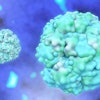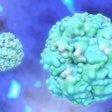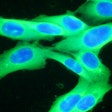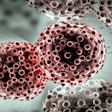
Massachusetts Institute of Technology (MIT) researchers have designed a nanoparticle sensor that could enable early diagnosis of cancer with a simple urine test.
Their research, published Monday in Nature Nanotechnology, indicates that these sensors also have the potential to distinguish the type of tumor present, how it is responding to treatment, and whether it has metastasized.
The team had previously been investigating the concept of detecting naturally occurring cancer biomarkers, such as proteins or circulating tumor cells, in blood samples. These biomarkers are hard to find, especially at early stages. The researchers sought to develop “synthetic biomarkers” that could diagnose cancer by amplifying small-scale changes occurring within small tumors.
Previously created nanoparticles were coated with peptides cleaved by different protease enzymes; peptide segments released into the bloodstream are detectable in a urine sample using mass spectrometry. However, since this equipment is not always available, the researchers sought to develop sensors that could be analyzed easily and affordably using DNA “barcodes” readable via CRISPR technology. The researchers used a chemical modification called phosphorothioate to protect circulating DNA barcodes from breaking down in the blood.
Each DNA barcode is attached to a nanoparticle by a linker that can be cleaved by a specific protease. If that protease is present, the DNA molecule is released to circulate, and ends up in the urine. Once sensors are secreted in the urine, the sample can be analyzed with a paper strip that recognizes a reporter activated by the CRISPR enzyme Cas12a. When a particular DNA barcode is present, Cas12a amplifies the signal so that it is visible as a dark strip on the paper.
The nanoparticles can be designed to carry many different DNA barcodes, each detecting a different type of protease activity, allowing for multiplexed sensing. Using a large number of sensors provides a boost in sensitivity and specificity, allowing the test to distinguish more easily between tumor types. In mice, a panel of five DNA barcodes could accurately distinguish tumors that originated in the lungs from tumors formed by colorectal cancer cells that had metastasized to the lungs.
Given the variety between human tumors, more than five barcodes may be required for human use. To help reach that goal, the researchers collaborated with other institutions to create a microfluidic chip that can read up to 46 different DNA barcodes from one sample. They are now working on further developing the nanoparticles, with the goal of building up disease signatures and seeing whether barcode panels can be used to detect as well as classify disease, and eventually testing them in humans.
“We are trying to innovate in a context of making technology available to low- and middle-resource settings,” Sangeeta Bhatia, senior author and MIT professor of health sciences and technology, said in a statement. “Putting this diagnostic on paper is part of our goal of democratizing diagnostics and creating inexpensive technologies that can give you a fast answer at the point of care.”



















